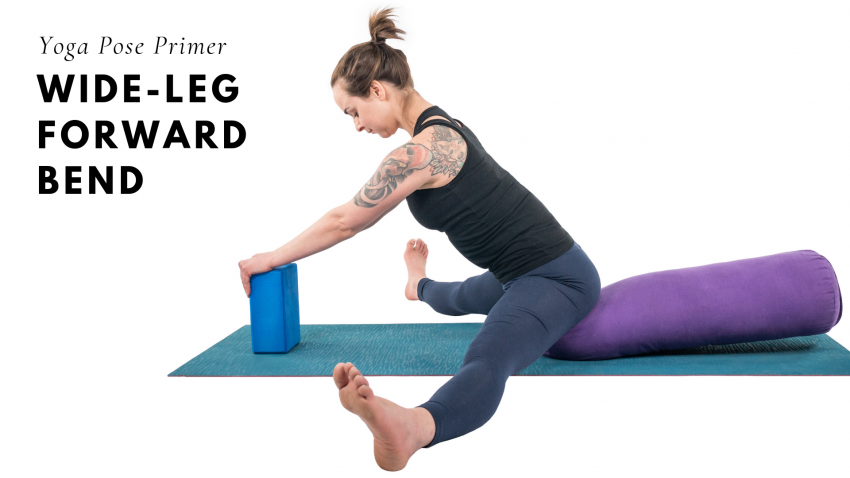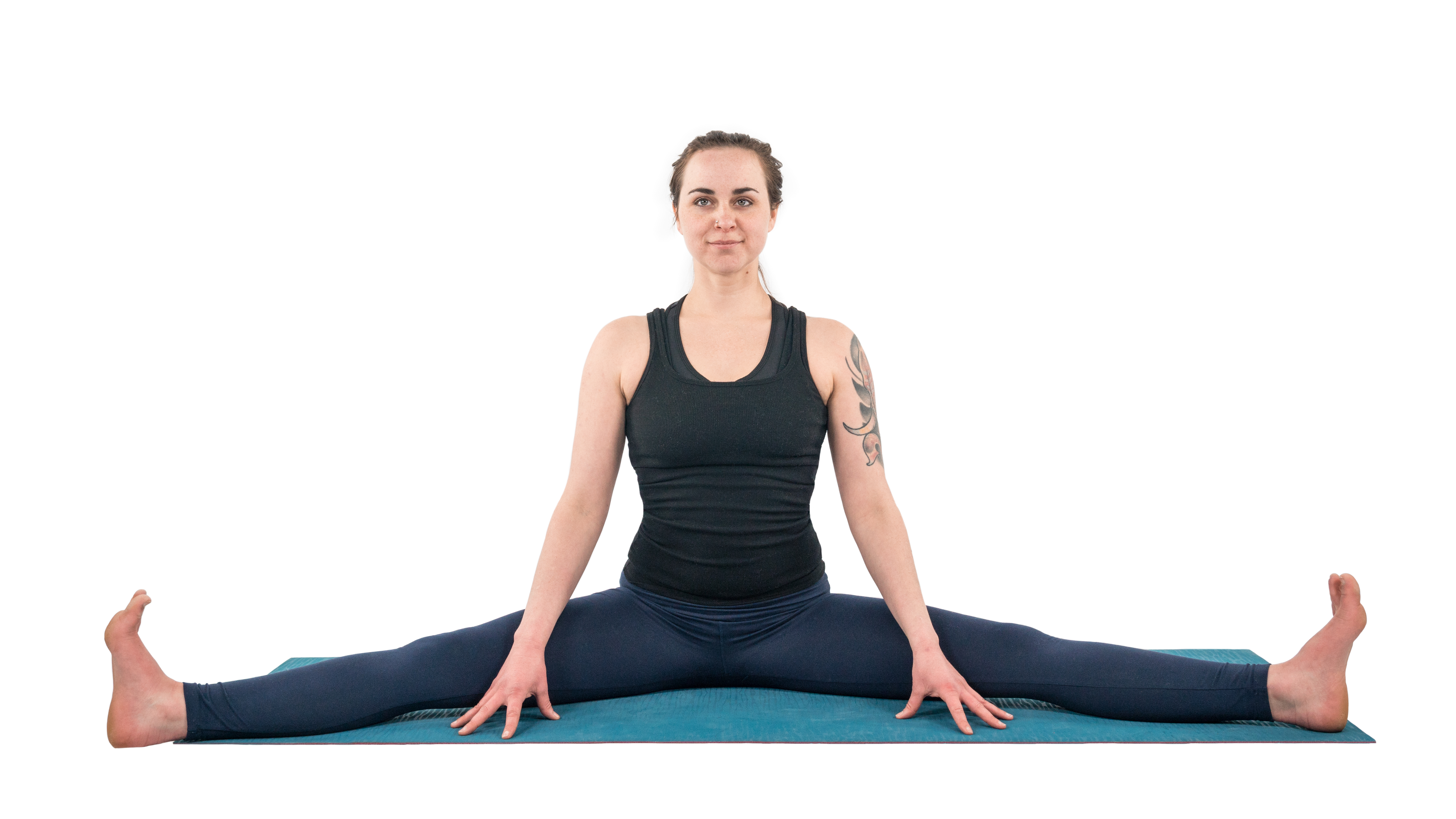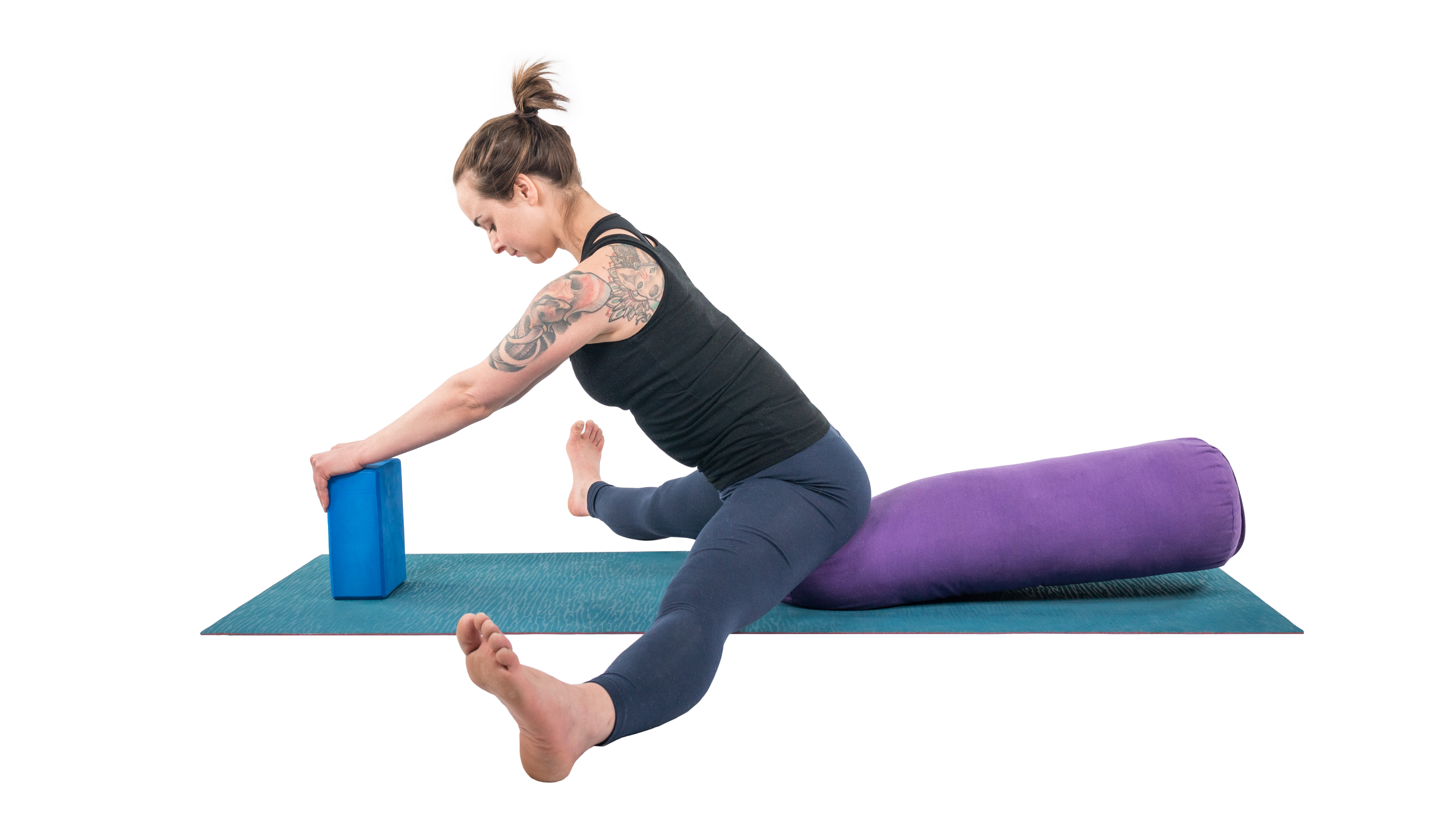View basket (0 items $0.00)

Yoga Pose Primer: Upavistha Konasana
My dad was a competitive gymnast in his teens and 20s. When he stopped competing, he still enjoyed practicing in our yard on his pommel horse. My sisters and I inherited his athleticism in various ways, but I ended up with the lion’s share of his flexibility. “Side splits” was my favorite childhood show-off pose.
In the ’80s, my practice was about building on my natural flexibility to perform “advanced” poses, especially extreme backbends and forward bends. Side splits remained a star in my quiver of show-off poses.
As the foundation of my practice has turned toward meditation over the years, my asana practice has become a quiet, moving meditation rather than a quest for the most impressive poses. Coincidentally—or not—this shift has paralleled my body’s decreasing ability to recover from amazing feats of flexibility. I’ve learned what I believe to be the most important lesson in creating a sustainable yoga practice:
Just because you can do something doesn’t mean that you should. This is worth repeating—like a mantra.
When ligaments are overstretched, they don’t bounce back. If you’ve ever sprained your ankle, you know what I’m talking about. Because ligamentous tissue doesn’t have a direct blood supply, it does not have the “memory” that muscle tissue has.
Many of the extreme yoga poses have the potential to cause ligament damage, especially in the hip, sacroiliac (SI) and shoulder joints. If you believe that yoga practice is healthy because it stretches your ligaments, please banish that idea. Here’s another mantra worth repeating: Ligaments are designed to limit the movement of joints. Please stop and repeat this now.
Stretching muscles is good; stretching ligaments, not so much. If your structure is going to support you throughout your life, into middle and old age, you must maintain the integrity of your ligaments. That means balancing flexibility and stability.
Unfortunately for my ego, this means I’ve had to stop doing side splits. However, I still do the far more yogic version, Upavista Konasana (Seated Angle Pose), with an awareness of maintaining joint integrity. I do this by dialing it back and being aware of how my joints feel rather than how my pose looks. When I practice Upavista Konasana with the intention of maintaining neutrality in my hip and SI joints, this pose helps heal the excesses of my past. It’s the healthiest forward bend I’ve found for my students with unstable SI joints.
How to Practice Upavista Konasana 
-
Sit on a mat on the floor. Have a firm blanket handy. Extend your legs out straight at a 90-degree angle to each other. Become aware of your hip joints. Do you feel compression (a feeling of being stuck) in the outsides of the hip sockets or sharp sensation close to the inner hip joints? Try moving your legs a little closer together and check your hip joints again. Adjust the angle of your legs until your hip joints feel “quiet” with very little sensation.
-
You can also find a healthy position by being aware of your SI joints. Does your SI joint feel compressed, as if the butt muscles are pressing in on it? Move your legs closer together, so that the SI joint feels quiet. If your SI joint feels quiet, chances are your hip joints will also feel quiet, and vice versa. These little adjustments set your foundation—your legs—up for a healthy, sustainable pose. No two skeletons are alike. Our hip joints vary vastly in depth, orientation and shape from person to person. In order to find a healthy, neutral position that will not damage our ligaments or joints, we must be aware of what we are feeling on the inside, and not worry so much about how a pose looks from the outside.
-
Now feel your lower spine with your fingers. If your vertebrae feel knobby, poking out into your back, fold up your blanket and sit on it so that your pelvis is higher than your feet. Check again. Keep adding height until your vertebrae settle into your low back.

If you are sitting on a six-inch pad and your vertebrae are still poking out, stay there and relax, pressing your sit bones into your blanket. Place your hands behind you and press downward to help you sit up straight. For the sake of your discs, stay upright rather than bending forward.
-
If your spine moves into your back easily—no knobby protrusions—and your pelvis can tilt forward, (we used a bolster here) leading with your pelvis, lengthen your torso forward resting your hands on the floor or blocks. Stay for five to ten deep breaths before returning to an upright position.
Several times while I was growing up, my dad ended up flat on his back for days with injuries—residue from his extreme gymnastics practice. I’ve had to learn this lesson too, from my cranky hip and SI joints. I’m content with the knowledge that I’ll never do side splits again. I’d rather maintain my ability to walk.
Yoga practice is not gymnastics. Asana is meant to replenish our energy and sustain our structures for the duration of our lives. The stillness that yoga brings to our minds starts with the stillness we create in our bodies.
Here's another yoga pose primer from YogaUOnline and Charlotte Bell - Refining Cobra Pose (Bhujangasana): New Alignment Tips for an Old Standby.
Yoga for Healthy Aging - Study with YogaUOnline and Lillah Schwartz - Yoga for a Healthy Spine: The # 1 Key to Enhance Strength, Improve Posture, and Prevent Osteoporosis.

 Charlotte Bell began practicing yoga in 1982 and began teaching in 1986. She was certified by B.K.S. Iyengar in 1989 following a trip to Pune. In 1986, she began practicing Insight Meditation with her mentors Pujari and Abhilasha Keays. Her asana classes blend mindfulness with physical movement. Charlotte writes a column for Catalyst Magazine and serves as editor for Yoga U Online. She is the author of two books: Mindful Yoga, Mindful Life and Yoga for Meditators, both published by Rodmell Press. She also edits Hugger Mugger Yoga Products¹ blog and is a founding board member for GreenTREE Yoga, a non-profit that brings yoga to underserved populations. A lifelong musician, she plays oboe and English horn in the Salt Lake Symphony and the folk sextet Red Rock Rondo whose 2010 PBS music special won two Emmys.
Charlotte Bell began practicing yoga in 1982 and began teaching in 1986. She was certified by B.K.S. Iyengar in 1989 following a trip to Pune. In 1986, she began practicing Insight Meditation with her mentors Pujari and Abhilasha Keays. Her asana classes blend mindfulness with physical movement. Charlotte writes a column for Catalyst Magazine and serves as editor for Yoga U Online. She is the author of two books: Mindful Yoga, Mindful Life and Yoga for Meditators, both published by Rodmell Press. She also edits Hugger Mugger Yoga Products¹ blog and is a founding board member for GreenTREE Yoga, a non-profit that brings yoga to underserved populations. A lifelong musician, she plays oboe and English horn in the Salt Lake Symphony and the folk sextet Red Rock Rondo whose 2010 PBS music special won two Emmys.
Featured Courses








